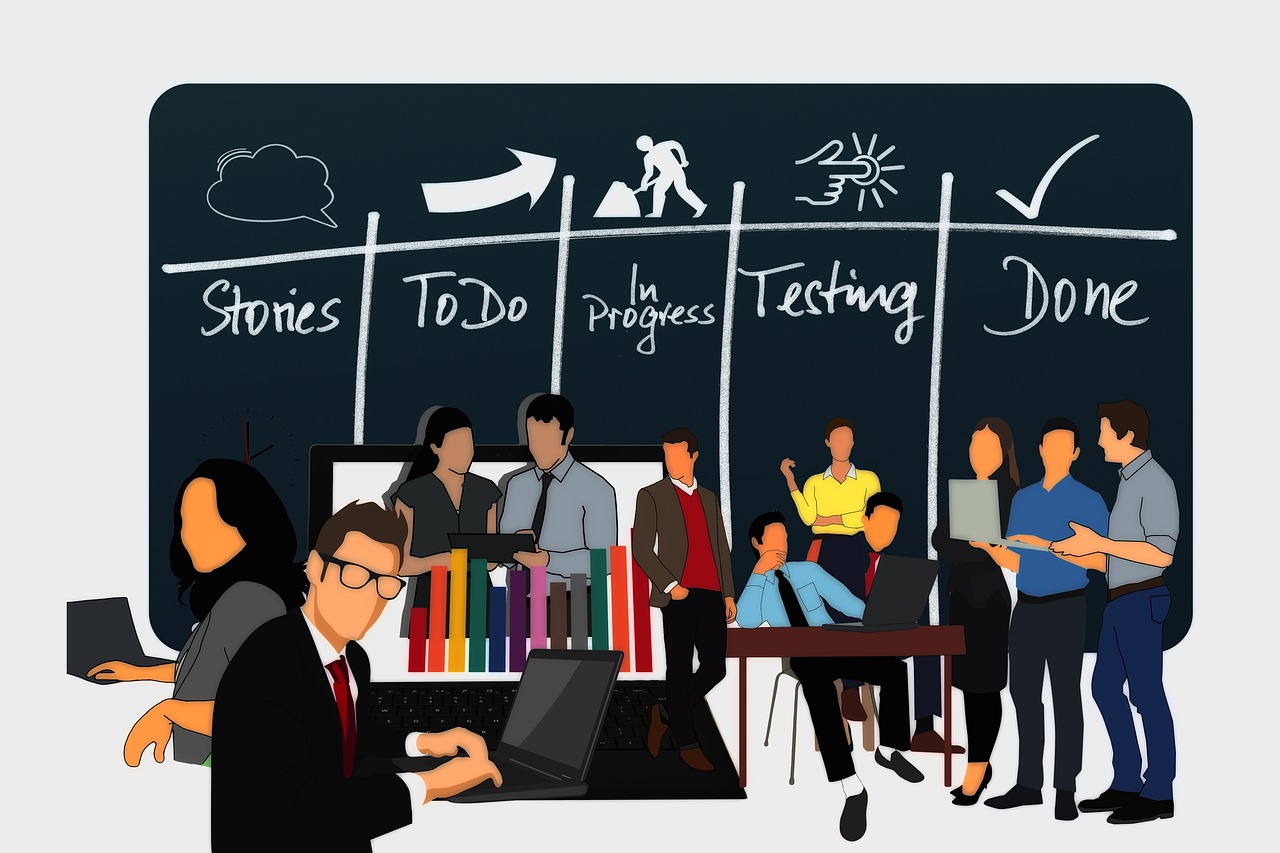Agile Methodology Explained
“Aha! I got it… It’s called agile methodology!” Those who have just recently taken a class about agile or who are new to the field may be stumped by what is meant by this jargon, but if you understand the basics, the meaning of agile methodology can be easily explained.
How to Understand Agile Methodology
If you are planning to create a business, then agile methodology can be one of the best options for you. As the name indicates, agile methodology concentrates on rapidly and safely releasing goods to the customers and it is applicable to all types of industries, irrespective of size and capital invested. According to the Oxford Dictionary, agile means “a rapid or speedy manner; motion.” So, if you want your business to succeed, then it would be a wise option to implement agile methodology into your business.
A clear example of agile’s capability to meet the working software requirements of the customers is the agile development process that is practiced at PayPal. In this method, a team of developers to work on the development of new features and applications which are supposed to be compatible with PayPal’s current platform. During this phase, every step is worked upon, from the preliminary steps to the final stages and this involves proper documentation. Since the working software needs to be developed in such a way that it can work in harmony with the existing documentation, this also requires the involvement of both the conceptual and operational managers.
One of the most important points that need to be understood properly by an organization before adopting agile methodology explained is that the use of the waterfall approach will not help. This might have been true in the past, but today, most of the software development teams prefer the waterfall model to agile methods because the waterfall method was initially introduced to combat the organizational shortcomings. Now, the waterfall model has been proved wrong and the usage of the model continues to be outdated. So, it is better to adopt agile methods than the traditional model of waterfall development. After all, agile methods are more cost-effective, easier to use and customize and they also yield higher quality outputs.

What Are the Roles in the Agile Methodology?
The Agile and waterfall methodologies for software development are primarily two different ways of approaching a program, with each having their own strengths and shortcomings. When a software development team is formed, there will be both the Product Owner and Architect involved, with the Product Owner controlling the creation of the product and its corresponding software requirements, and the Architect implementing those requirements. In an Agile environment, the Product Owner is not involved in the process of software development, but rather provides guidance throughout the process and ensures that all necessary documentation and requirements are met prior to beginning development. Development team members are fully in charge of the development processes. The Product Owner should meet the schedule required by the sprint plan (typically six weeks) and be available to ask questions or give advice if need be. However, if additional time is required to meet goals or ensure that documentation meets requirements, this is generally at the discretion of the Product Owner.
The difference between these two approaches becomes apparent when considering the design of the actual product. In the Agile methodology, a user is the individual who has an interest in the project and is involved in the earliest stages of its development. As the project progresses, the user’s role in the development of the product decreases as the Product Owner takes over more responsibility. At the end of the process, the product relies on the user’s feedback and expectations for improvement. With waterfall processes, users are typically involved in the planning stages, but once the software has been developed, the product owner takes full control and responsibility for improvements.
It is important to note that all of the descriptions above are only meant as a guide. When speaking with consultants and other business managers, it is important that they are able to explain each of the definitions in a clear and concise manner. The definition of a role should be tailored to the specific business problem that it is meant to address. By doing so, it will become much easier to define roles in the agile methodology and assign them appropriately to the business problem.
How Agile Works For Software Development
The agile project development methodology which was started in the 1990s is becoming more prevalent than ever before because of the many benefits it offers. Agile is an acronym for “aghetti code”; this refers to the idea that any piece of code written for a specific business need to be tested and maintained in a series of small, self-contained units. This approach makes it easier for a team to work as a team and allows projects to be completed in a reasonable amount of time. This methodology also results in less frustration on the part of the client, as well as increased satisfaction from the customers.
The Agile framework is a group of architectural and policy patterns meant to guide modern enterprises in scaling agile and lean practices into their business strategies. Agile itself was started in the United States during the 1990s, with the intention of making software development simpler and cheaper for organizations. In turn, this would allow companies to be far more nimble when it came to implementing new software designs and acquiring additional capabilities. The main idea behind the Agile model was to provide guidelines for the process and make it easy to create software applications that would meet the exact needs of a given business. While there are many benefits of using Agile methods, some disadvantages are also present because of the fact that Agile has not yet been embraced by all organizations.
One of the disadvantages of using agile frameworks is that because Agile was created as a way to decelerate the process, it can take a while for teams to truly get to the end result of a software application. As a result, Agile is often implemented within a series of sprints or cycles instead of a single, continuous development cycle like the traditional project methodologies. For businesses trying to implement Agile within their own company, there are a number of things that they can do to speed up the process of getting a new product or service to market. Some of these include switching to shorter sprints, using sprint planning to keep everyone on the same page, streamlining processes, and automating common testing tasks.

A Look at Scrum
Most people who have heard the term “software development” have probably heard of the agile development, too. Scrum is an offshoot of agile: Agile is a set of basic principles and values that describe the daily activities and dealings of a team. Agile in itself isn’t prescriptive or definitive. Rather, Agile simply describes a methodology for accomplishing certain tasks more efficiently, which can be applied to any project. This article will provide a brief overview of what Scrum is, what it’s used for, and why you might consider using Scrum for your next software development project.
The Agile open source code management initiative was started by five software development teams (Carnegie Mellon, Black Hills, Facebook, Twitter, and IBM) to address some challenges in software development teams. The original Agile guidelines encouraged a collaborative development process where members of the teams had regular contact, which was called “iteration” by the team lead. By changing the environment of the agile methodology slightly, the team was able to accelerate development time while meeting the standards of agile software development. In contrast to the collaborative Scrum method, the Scrum method is structured and controlled in a manner that emphasizes process improvement over creative involvement. With the “safe” Agile format, software development teams can be confident that they are doing work that improves the quality of the solution that they are delivering to their customers.
As you can see, Scrum isn’t a static method or a rigid set of rules. Rather, it’s more about making sure that the software development team has the resources necessary to quickly evolve towards a defined goal. Many software development teams have adopted Scrum as their own operational methodology. There are also several books, programs, and online articles that have been written on the topic. If you’re interested, you may want to consider purchasing a few of these books and reading through some of the information that’s available to help you better understand Scrum.
What Are the similarities and Differences Between Kanban and Scrum?
Both are team-based collaborative systems. Scrum is a series of short, focused work sessions, while Kanban is all about continuous and flexible work sprints. Agile, however, is all about visualizing how your work will look at the end of the day, minimizing work in progress, increasing efficiency (or “flow”), and ultimately, reducing risk.
Both Kanban and Scrum have the ability to handle the large backlog. Kanban’s ability to track work in the process allows it to reduce the backlog, while Scrum helps the team deal with the backlog after work is complete. The biggest difference between the two, however, is that Kanban is much more focused on formal methodology. Scrum, by contrast, focuses more on developing software as part of an informal, collaborative process.
Scrum gives the team members a sense of ownership over the project, while Kanban helps manage work through a formal methodology. Kanban, in addition to providing a visual framework for how work is done during each sprint, also serves as an accountability tool. A Kanban board, for example, can provide an explanation of why certain tasks were completed, as well as provide a reflection on how efficient each sprint was. While both Kanban and scrum have their own benefits, in the end, only scrum can remove the need for backlog tracking.
Conclusion
This article has attempted to define Agile Methodology, its purpose and the roles in the agile development process in order to aid those making the decision to use this methodology in their organizations. Our hope is that this short overview has provided clarification as to what roles in the agile methodology are intended to mean to those making a change to an Agile development team and their roles in the overall management of the project.

